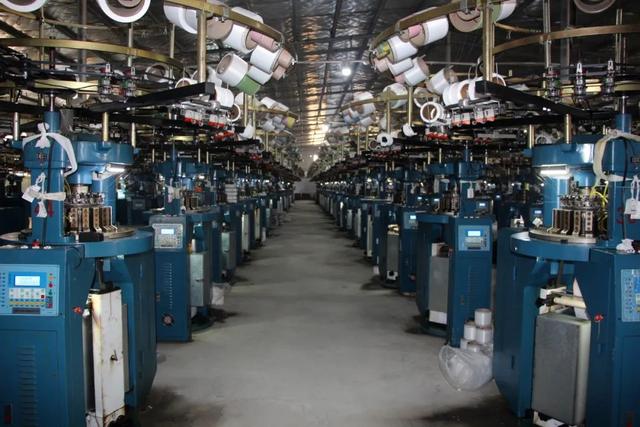Zhang Weichao’s sock industry has over 2000 sock production equipment, so how are these sock machines specifically used to produce socks? Today I will give you a rough understanding.
1.The entire process of forming cotton socks
Cotton socks are molded goods. A detailed cotton sock is handcrafted, and the manual weaving method and processing process vary depending on the type of cotton sock and the characteristics of the sock machine. There are roughly the following types of methods.
Three step molding: Weaving short socks on a single needle hosiery machine, the sock opening is done in a threaded machine, or rubber band thread or spandex thread can be inserted into the sock opening. Subsequently, the sock mouth is transferred to the needle tube of the sock machine through the prick plate, and then the sock body, heel, foot, structural reinforcement ring, sock head, grip horizontal column, and other parts are manually woven. The speed of removal from the machine is very low, only a sock blank with the sock head pulled open. Afterwards, cotton socks also need to be sutured using a sewing machine. Weaving a cotton sock requires three types of equipment.
Two step molding: Hand weave straight cut socks on a folding sock machine, which can automatically start and fold, producing two layers of flat needle sock cuffs. Then, manually weave various sections of the sock blank in sequence. Another type of hosiery machine can be used to manually weave flat needle pads, rubber bands, or spandex silk with fake cuffs on the hosiery machine. Other devices can also weave single or double ribbed fabrics, and then manually weave other sections after weaving. These types of cotton socks need to undergo surgical stitching with a sewing machine to become cotton socks due to their slow removal speed. Weaving a cotton sock only requires two types of equipment. The double needle hosiery machine has two needle tubes, upper and lower. It is possible to manually weave threaded sock cuffs and various sections of the sock blank on the sock machine, but the sewing head still needs to be carried out when the machine speed is very low. It also belongs to two-step molding.
One step molding: The sock mouth is transferred to the needle tube through the prick plate, which is called the “cuff”, and the sock head is surgically sewn together, which is called the “seam head”. These two processes have high labor efficiency, low production efficiency, and require additional raw materials. After technological innovation, we have developed a “single program automatic sock machine” with a unique design style in China, which continuously produces three process flows of sock mouth, sock weaving, and sewing on one sock machine.

2.The production process flow of cotton socks: From the entry of raw materials to the production of finished cotton socks, there are many processes that need to be carried out. When going through each process in sequence, it is necessary to follow the methods and regulations, and carry out them according to standards. All steps are the production process of cotton socks production. The production process of a sock factory must be formulated based on the characteristics of raw materials, regulations for finished products, and standards for commonly used machinery and equipment. A better processing technology can reduce the production cycle, achieve high-quality, increased production, and low cost goals. Before the commodity is completed and put into production, it undergoes multiple processes including testing, re sampling, approval, and completion. The production process of raw materials involves coloring before spinning, as well as spinning before coloring. The processing technology is determined based on the condition of the goods, raw materials, and machinery equipment. At present, the vast majority of cotton stockings and elastic nylon stockings choose to be dyed first and then spun, while solid colored cotton wool stockings and nylon stockings are dyed after spinning.

